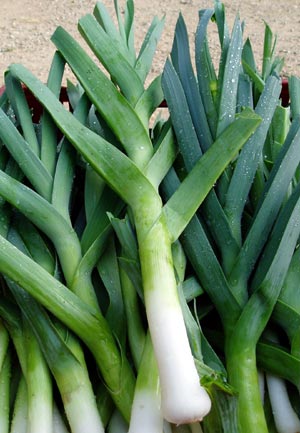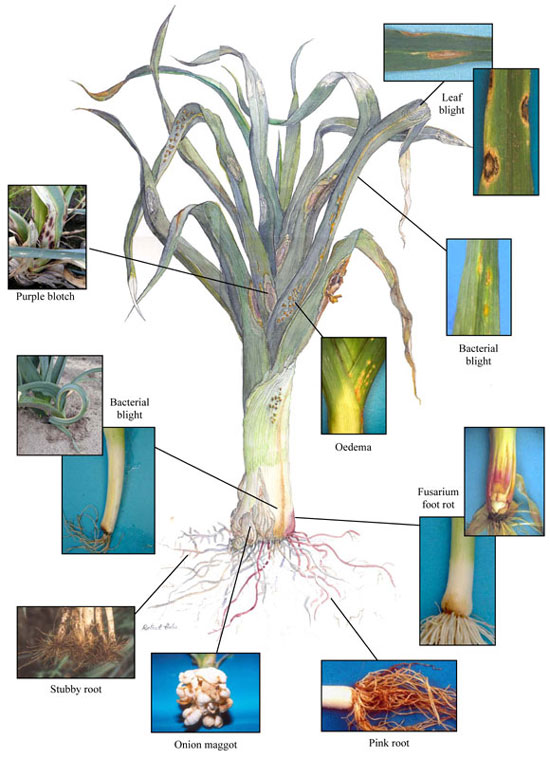|
|
Leeks belong to the Allium family and Diseases have been reported on commercial crops in Australia and the spread of these problems could jeopardise further development of the industry and affect the maintenance of existing domestic and export markets. The aims of this project were to determine the main disease problems of
Summary : Extensive surveys of leek plantings in Australia identified two main diseases, Fusarium foot rot (Fusarium avenaceum and F. oxysporum) and Bacterial blight (Pseudomonas syringae pv. porri) as the cause of significant economic crop losses.. Lesser diseases included :
Surveys also showed that seedlings can often be infected with Fusarium without showing symptoms. All commonly planted varieties were susceptible and trials showed that planting infected seedlings increased seedling mortality and Fusarium infection at harvest. Bacterial blight caused by Pseudomonas syringae pv. porri was shown to be seed borne in leek seeds planted in Australia. Preliminary studies showed that soaking seed in hot water eliminated the bacteria from the seed, but the treatment severely reduced germination.
Recommendations : This project has shown that Fusarium foot rot and Bacterial blight are the two most economically important diseases of leeks in Australia. Seed treatments need to be further evaluated to determine the efficacy of physical and chemical treatments in eliminating pathogens from seed. Further testing also needs to be done on the use of chemical and biological treatments to reduce or prevent plants becoming infected with Fusarium in the nursery and after planting in the field. Studies should also continue to evaluate fungicides and spray programs for the control of Alternaria and Stemphylium, as these two pathogens may become more important in the future particularly if there is climate change. Studies need to be carried out to evaluate seed treatments for the control of bacterial infection in seed, and whether these treatments effect germination. The spread of bacterial blight in plantings needs to be evaluated and whether different copper formulations can reduce spread and infection levels. As a results of these studies growers should:
Acknowledgements : We wish to thank the leek growers of Australia and related industry personnel for participating and The leek growers in South Australia and Victoria for their co-operation A special thank you to the leek All the technical staff at the Plant Research Centre and the Lenswood Research Centre for their help in We wish to thank Michael Priest, Dr Ric Cother and Dorothy Noble from the New South Wales DPI This project has been facilitated by South Australian State Government and Horticulture Australia Limited (HAL) in partnership with AUSVEG and has been funded by the National Vegetable Research and Development Levy. The Australian Government provides matched funding for all HAL’s R&D activities. |
||||||
|


